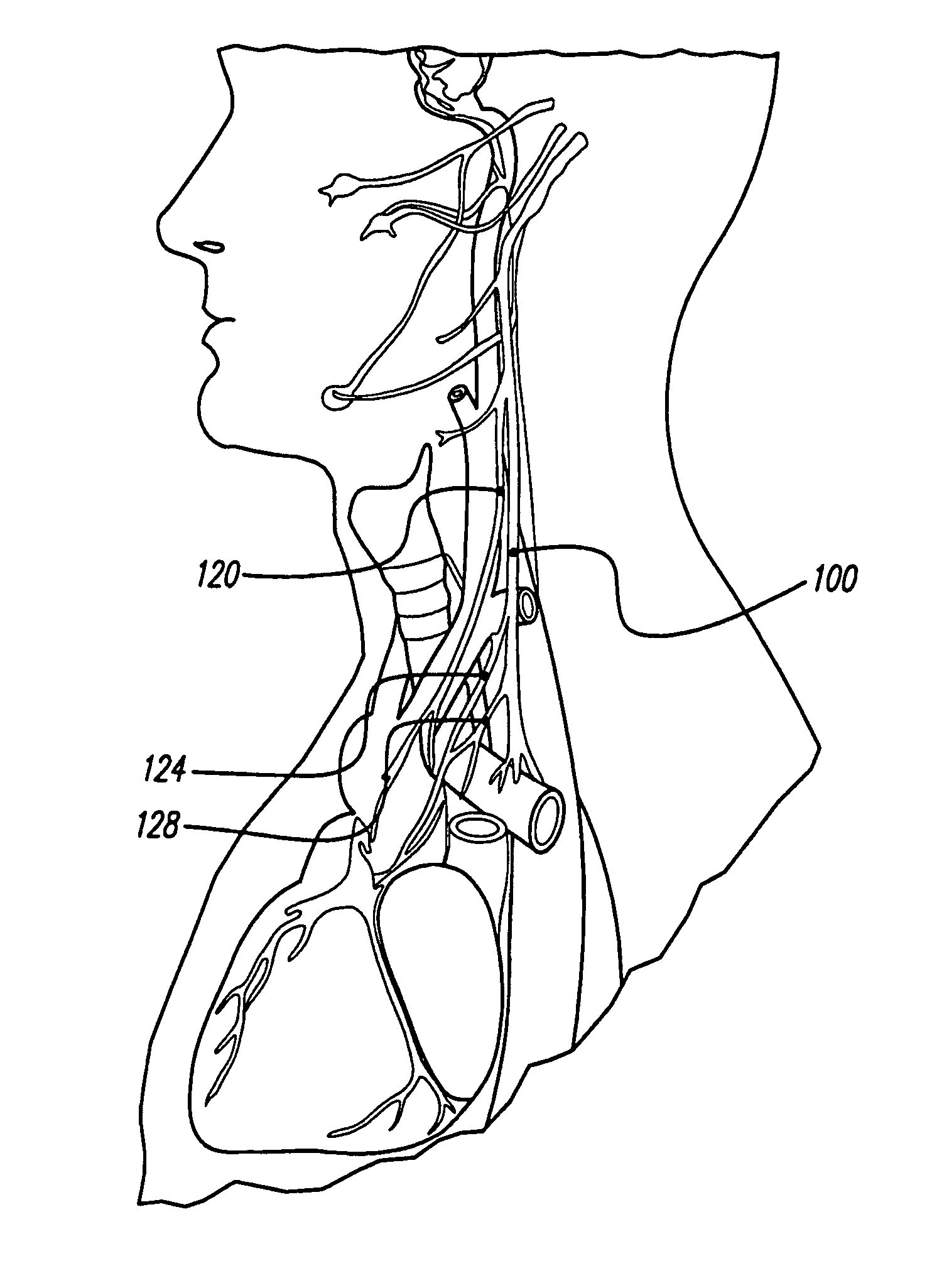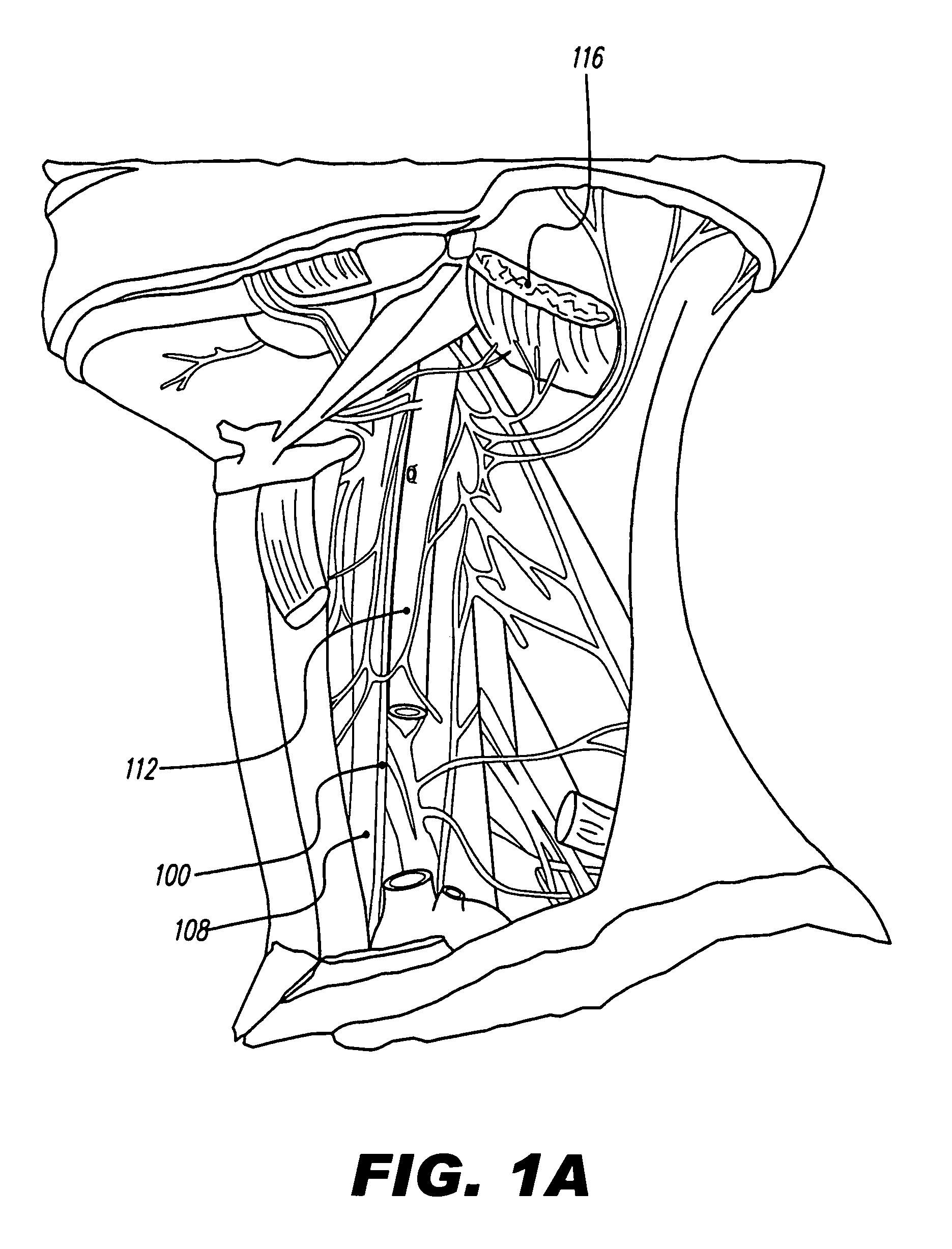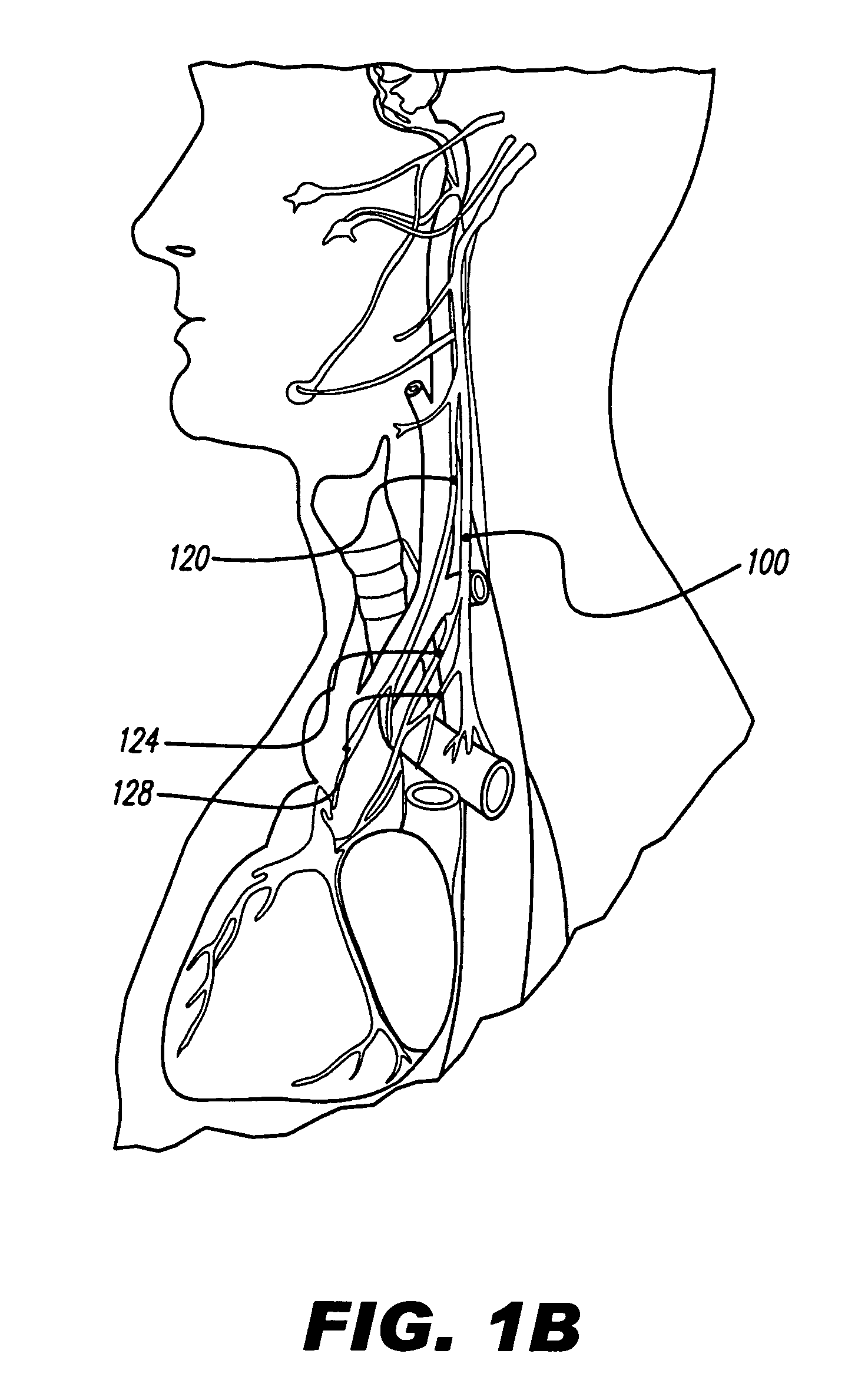Treatment of movement disorders with drug therapy
a technology of drug therapy and movement disorders, applied in the field of drug delivery systems and methods, can solve the problems of decreased inhibition of movement, increased pain, and increased pain of patients,
- Summary
- Abstract
- Description
- Claims
- Application Information
AI Technical Summary
Benefits of technology
Problems solved by technology
Method used
Image
Examples
Embodiment Construction
[0038]The following description is of the best mode presently contemplated for carrying out the invention. This description is not to be taken in a limiting sense, but is made merely for the purpose of describing the general principles of the invention. The scope of the invention should be determined with reference to the claims.
[0039]FIG. 1A depicts nerves, muscles, arteries, and veins in the neck, while FIG. 1B illustrates various nerves in the head, neck, and thorax. As can be seen, the vagus nerve 100 is relatively easily accessible in the neck. The vagus nerve lies within the carotid sheath 104, along with the common carotid artery 108 and the internal jugular vein 112. The carotid sheath 104 lies beneath the sternocleidomastoid muscle 116, which, in FIG. 1A, is cut and turned up.
[0040]FIG. 2 is a cross-section through the neck, at the level of cervical vertebra C7. The vagus nerve 100 has a number of nerve branches. Three of these branches are named the superior cervical cardi...
PUM
 Login to View More
Login to View More Abstract
Description
Claims
Application Information
 Login to View More
Login to View More - R&D
- Intellectual Property
- Life Sciences
- Materials
- Tech Scout
- Unparalleled Data Quality
- Higher Quality Content
- 60% Fewer Hallucinations
Browse by: Latest US Patents, China's latest patents, Technical Efficacy Thesaurus, Application Domain, Technology Topic, Popular Technical Reports.
© 2025 PatSnap. All rights reserved.Legal|Privacy policy|Modern Slavery Act Transparency Statement|Sitemap|About US| Contact US: help@patsnap.com



